Contemporary Strategic Management: Social Sustainability Presentation
VerifiedAdded on 2023/04/19
|8
|1149
|72
Presentation
AI Summary
This presentation, developed for a business course, examines the critical issue of social sustainability within the clothing manufacturing industry, particularly focusing on the ethical implications for companies operating in developing countries. It delves into the complexities of child labor, the impact of customer demand on ethical sourcing, and the influence of government regulations. The presentation highlights how major corporations are navigating these challenges through corporate social responsibility (CSR) initiatives and transparency policies. It also evaluates the currency, reliability, authority, and purpose of the sources used, applying the CRAP test to assess the credibility of the information presented. The analysis covers the shift in customer preferences towards ethically produced goods and the role of innovation in sustainable manufacturing practices, such as using alternative materials. The presentation also discusses the evolving legal landscape in developing nations, where governments are implementing stricter laws to enforce ethical compliance. It references various studies and reports to support the arguments and provide a comprehensive overview of the current state of social sustainability in the clothing industry. The presentation aims to provide a thorough understanding of the ethical challenges and the strategies companies are adopting to address them.
1 out of 8

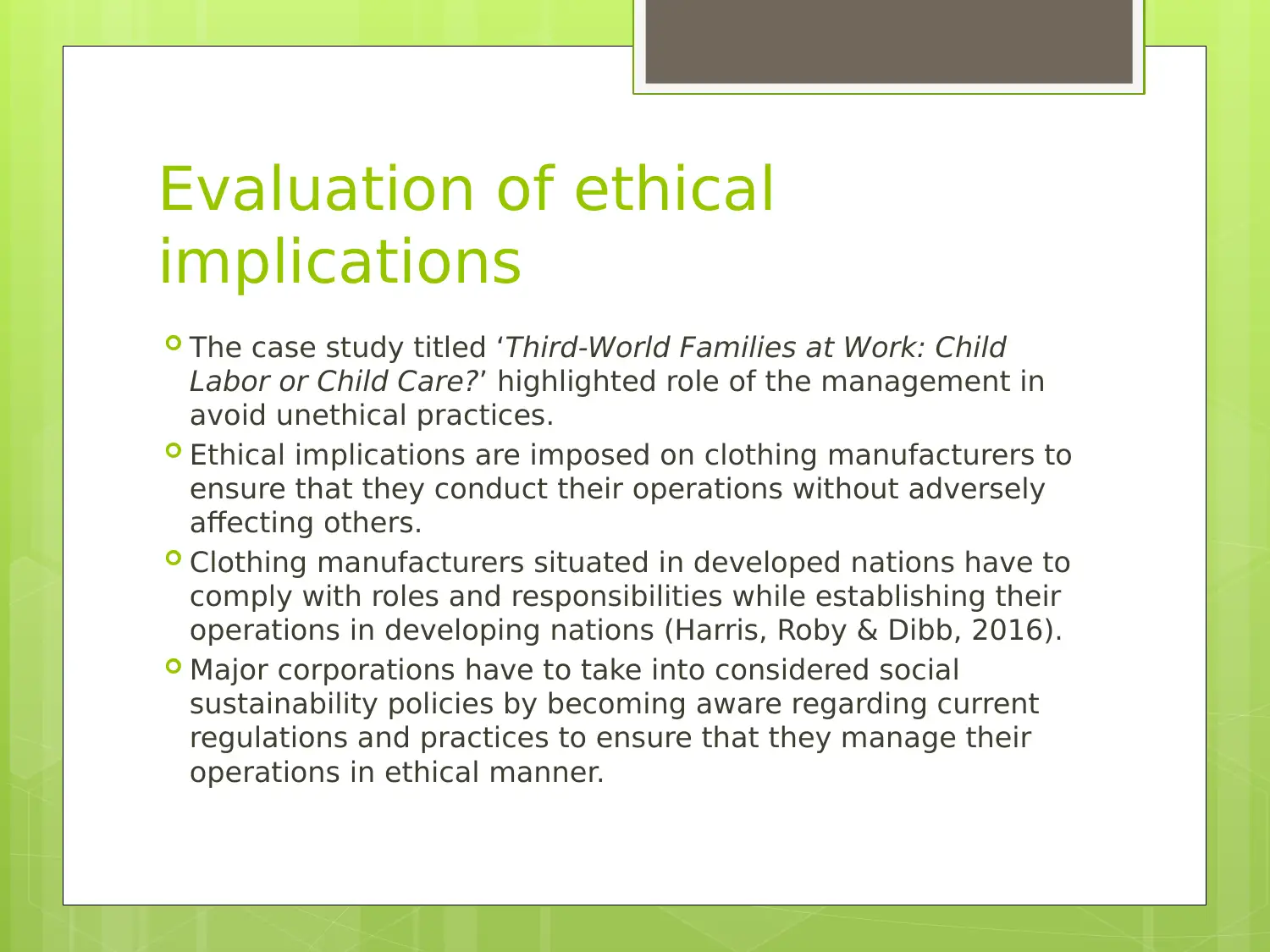
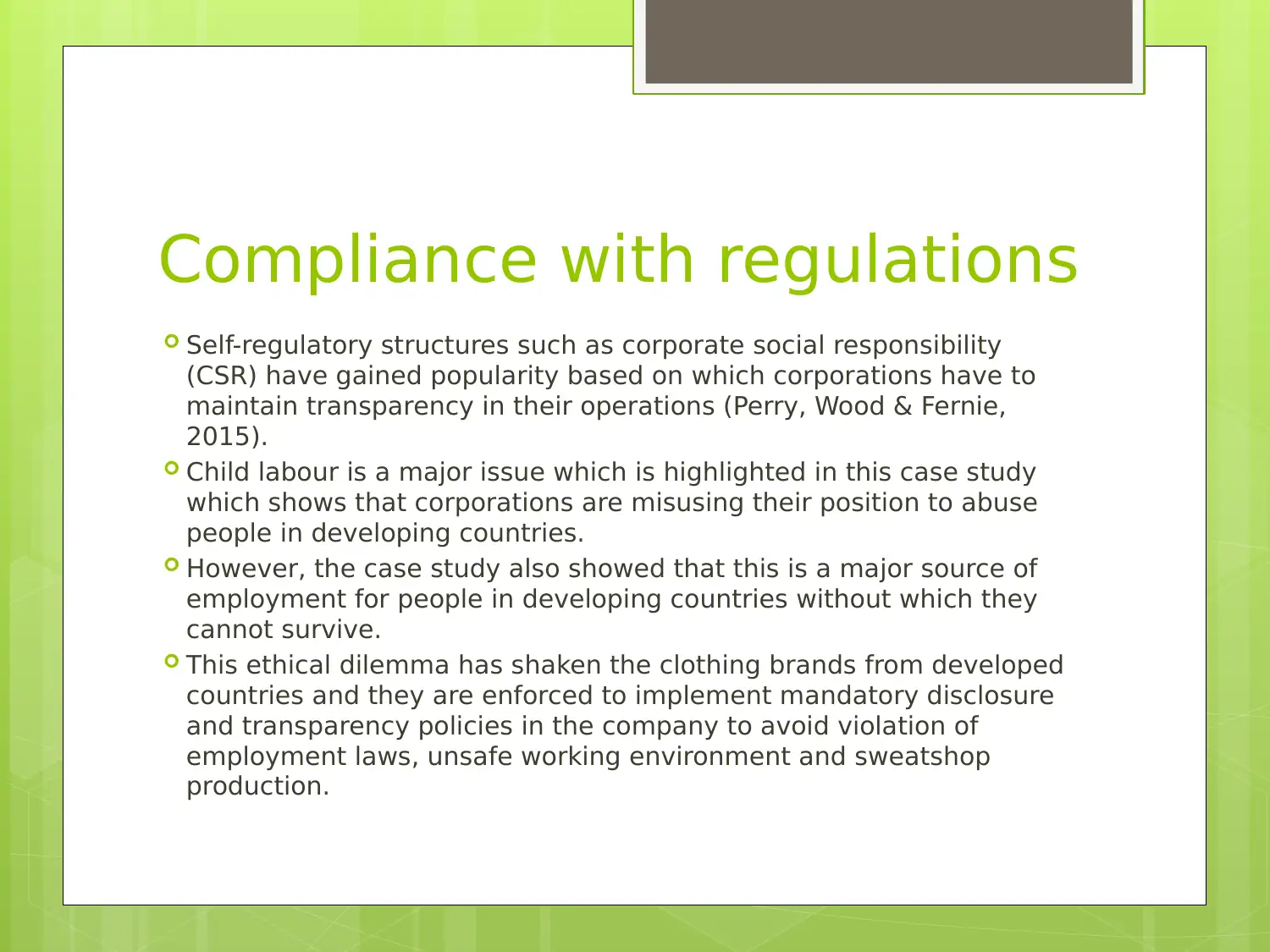

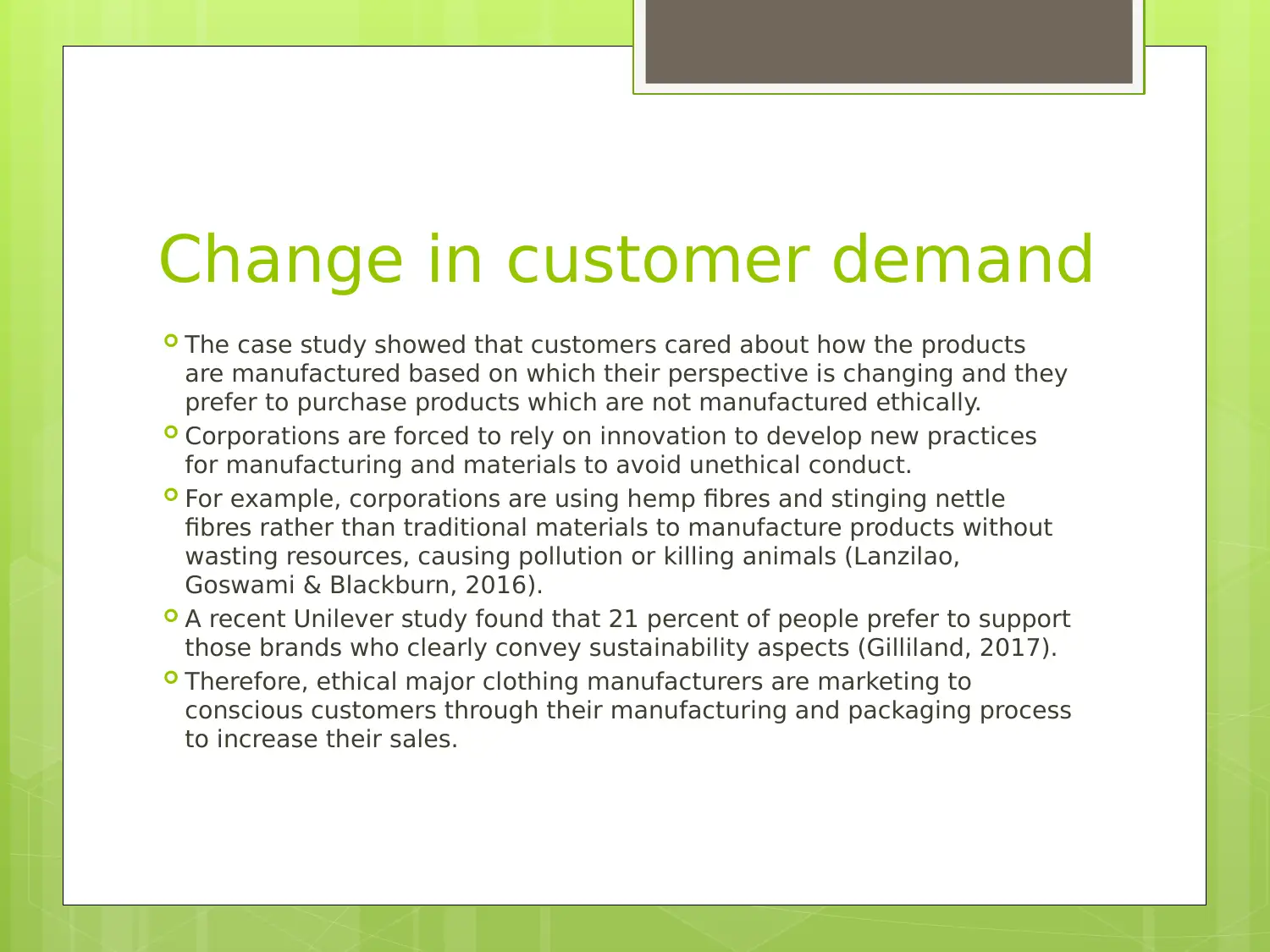
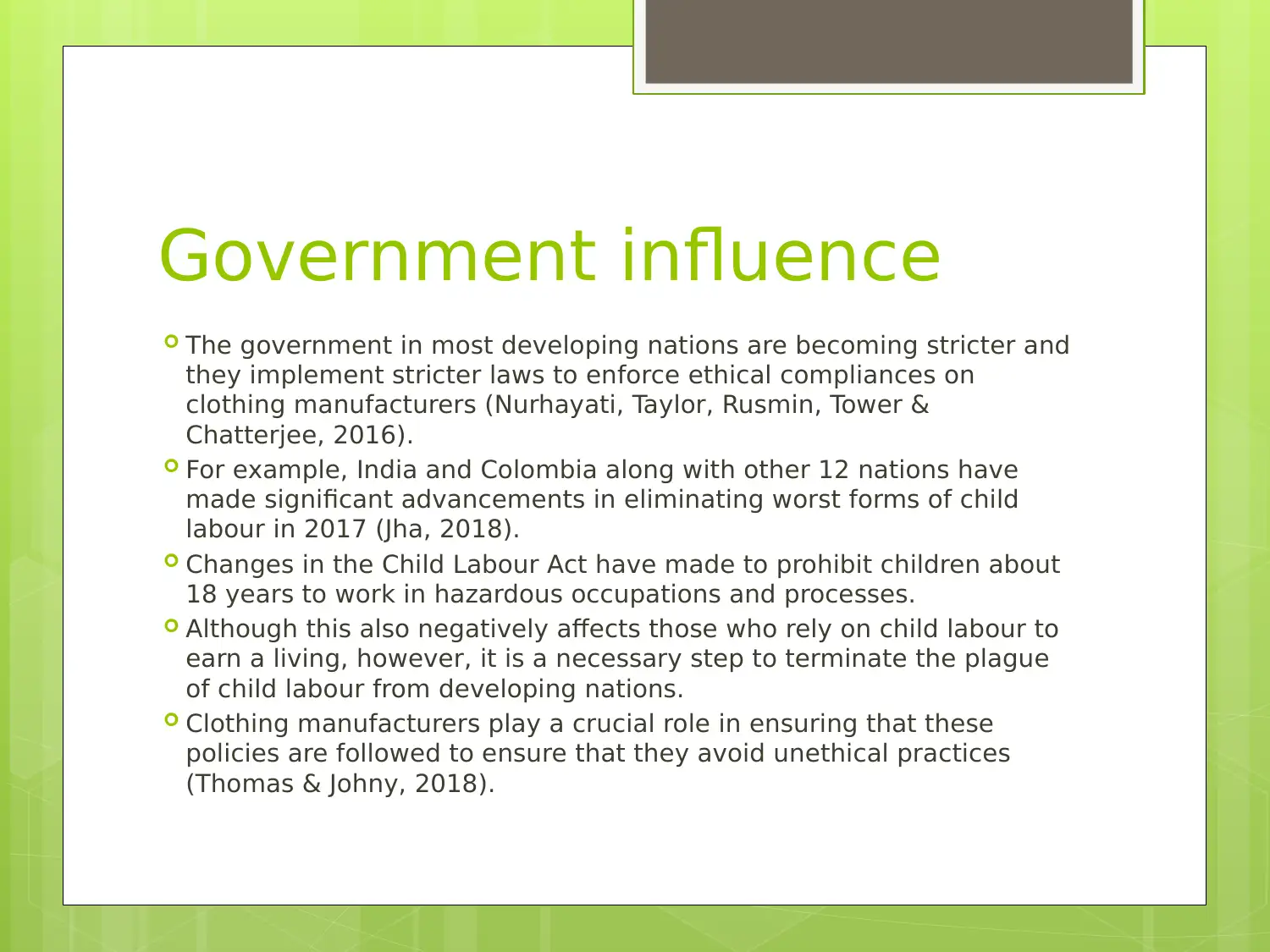
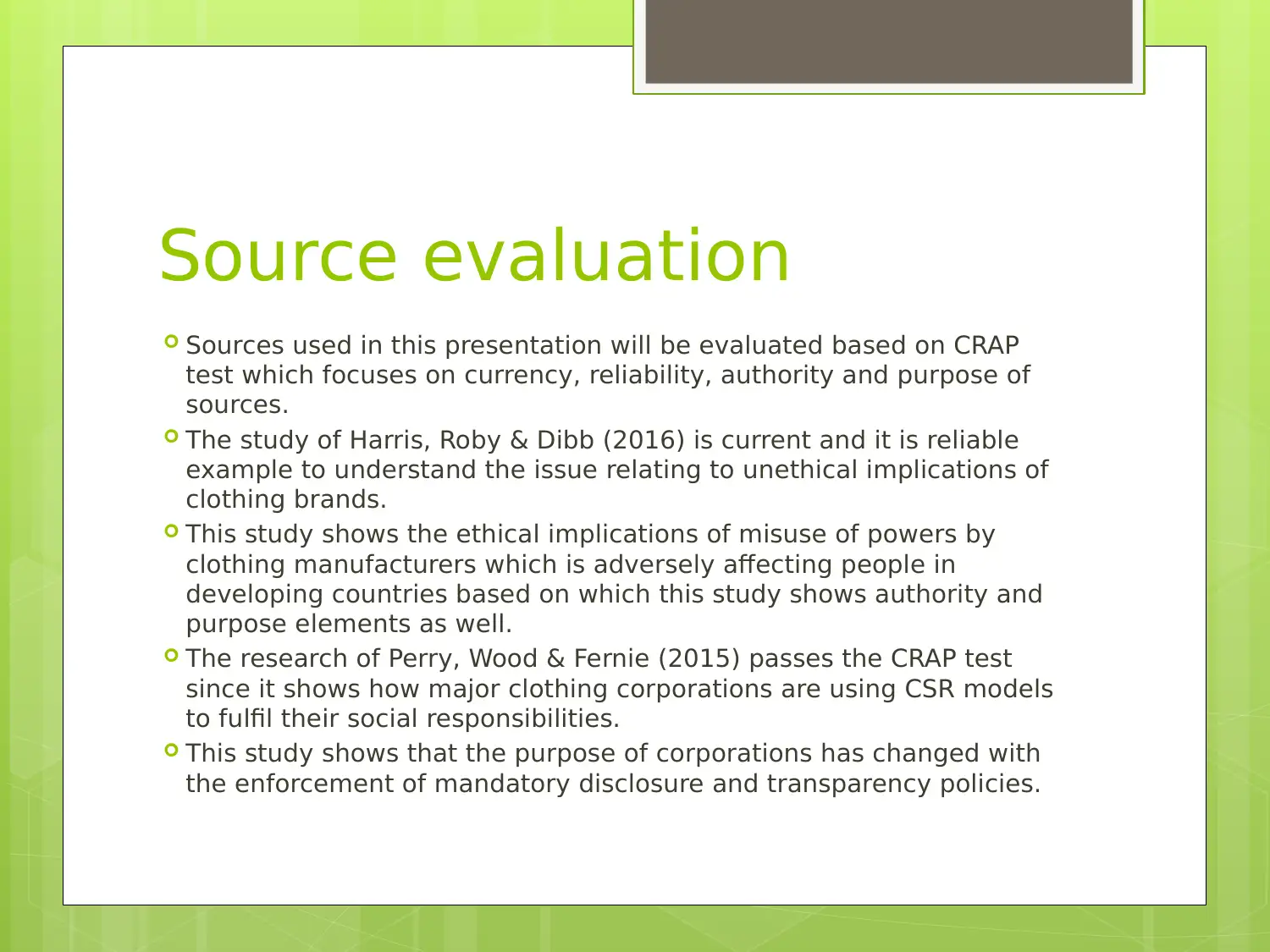
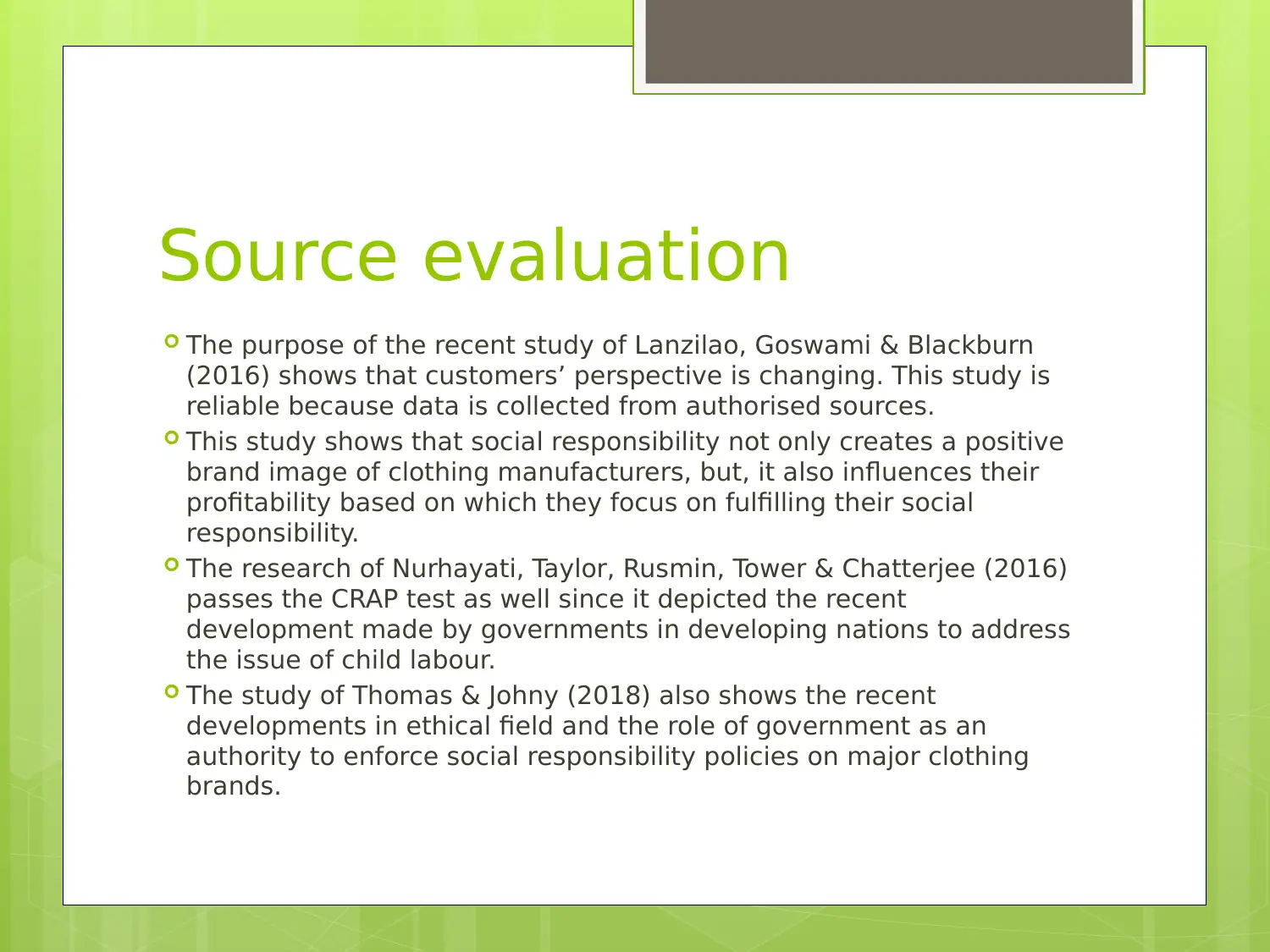
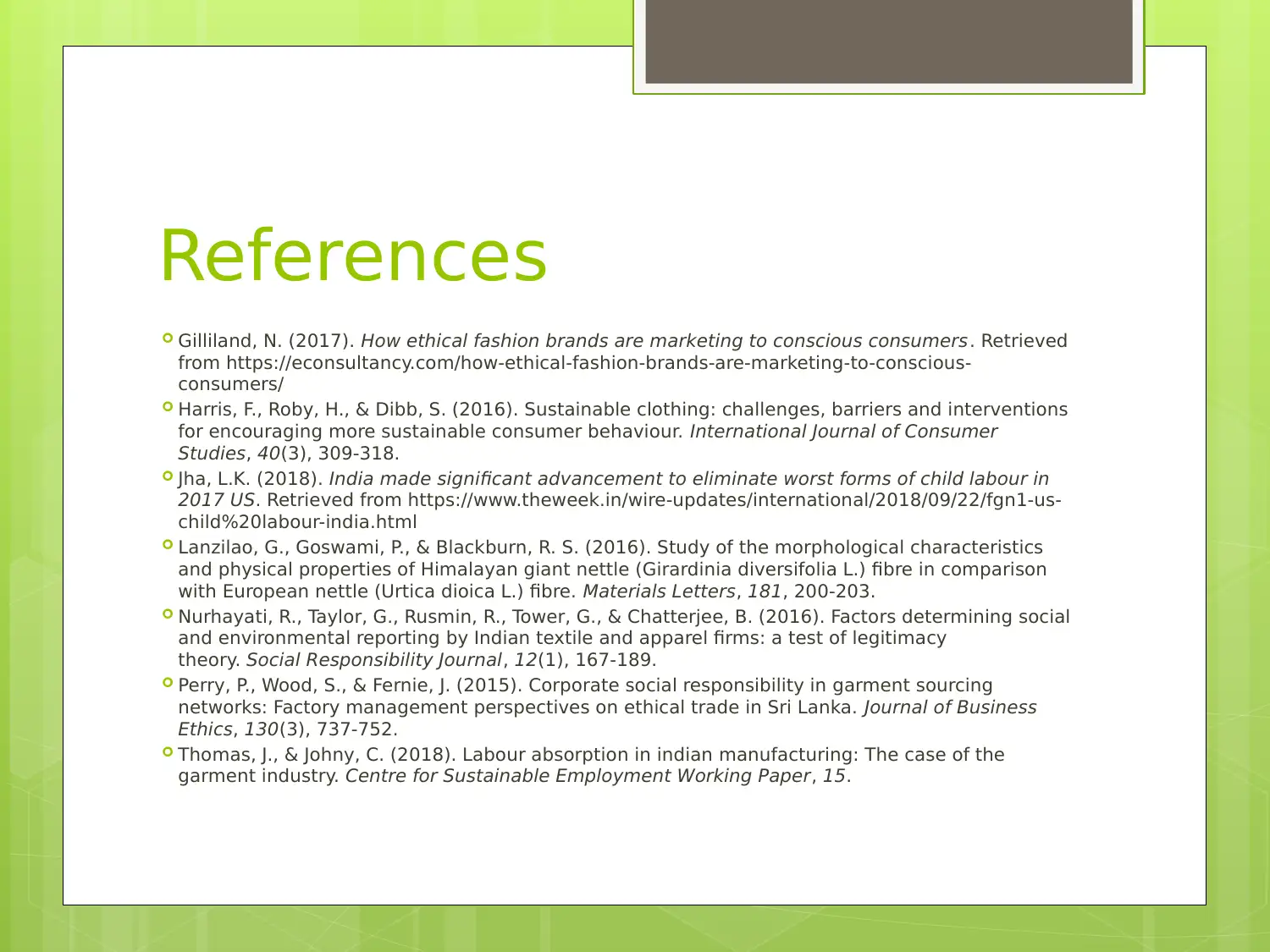






![[object Object]](/_next/static/media/star-bottom.7253800d.svg)